
“Forget five-star accommodation, here I welcome you to my five-thousand-star hotel,” says our Aboriginal guide, Bill, with a proud, expansive gesture and eyes turned skyward. We look up and try to take in the vastness of the clear dark sky stretching in every direction over our netted hammocks. Above us is the most spectacular star-studded skyscape we’ve ever seen.
The air is thick with the evocative evening call of the cicadas and the heady scent of eucalyptus. We are settled for the night deep in the Australian outback, outside Katherine in the Northern Territory. I sip bush tea cooked in a battered Billy-can as Bill’s damper (a bush bread) and his bush tucker stew cook on the campfire. All day he has been sharing the Dream Time stories of his ancestral lands, walking us through the dusty, dry outback, pointing out bush tucker delicacies and medicinal must-haves; ancient art sites and natural geographic features full of legend and deep meaning.
It’s an adventure of the most authentic and educational kind. He shows us carefully and quietly that there is so much more to the outback than the ‘empty’ landscapes our western eyes see without his expert tuition. And we also learn that the opportunity to share culture and sacred stories is an empowering experience for his people too.
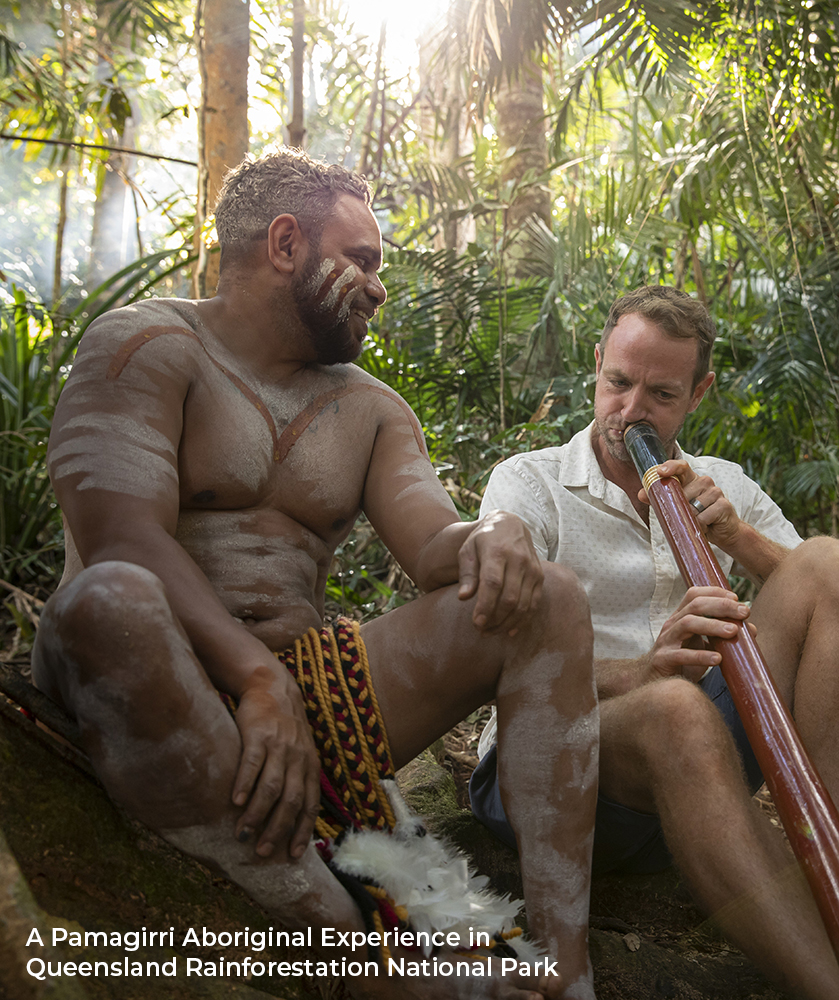
The stories of indigenous people all over the world are increasingly making their way into tourism whether in tours and museums, events or art, but it is important to embark on any quest for an indigenous experience with some sensitivity and understanding.
Tribal dress, ceremonial rituals, dance, music and sacred places have an intrigue and magnetic appeal to the outsider but should represent live cultural values, not just tourist show pieces, and it is important to check the credentials of your interactions before you book.
In many parts of the world the back stories of these communities are neither poetic or pretty but rather a harrowing catalogue of wrongs done to indigenous groups in the name of progress – as outsiders arrived, settled and tried to change their traditional ways.
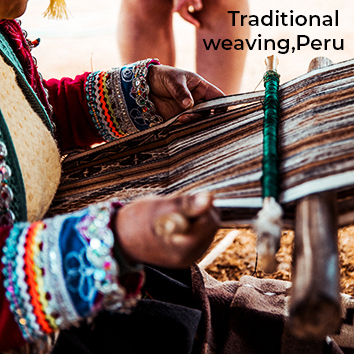
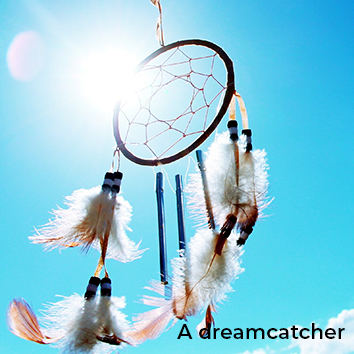
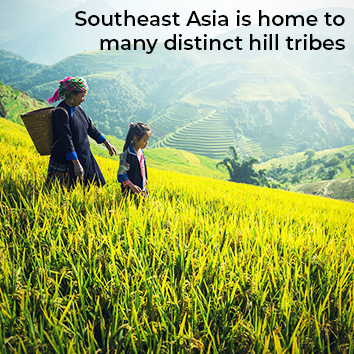

Explorers from afar often brought diseases which wiped out native people, and religious do-gooders taught others to deny their language and culture in the name of God. Some of the damage done is now recognised as ‘cultural genocide’. But with more woke times upon us, nations are slowly facing up to their ugly past, redressing wrongs, and working hard to develop employment opportunities and a new respect for indigenous communities. In many cases tourism can play a very positive role in this.
Minority Rights Group International helps indigenous and minority groups to combat persecution and marginalisation and achieve climate change justice.
Minorityrights.org
In Australia, Bill explains, bush skills and native knowledge wasn’t always recognised, let alone valued, but as international interest in indigenous culture grew, younger generations saw they could earn an income from their heritage, and tourism helped give them a new pride in their ancient traditions, and a new sense of purpose in sharing it.
For travellers, these experiences can offer authentic insights and cultural engagement, while for the communities they become a driver for positive change and support the sustainability of their culture.
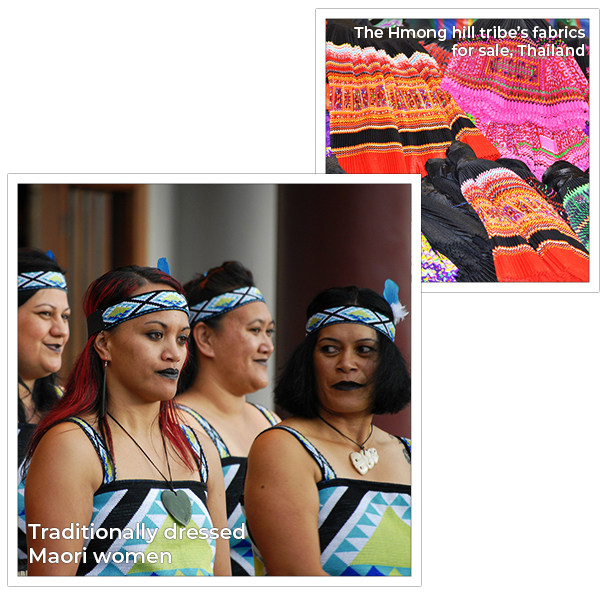
Engaging with indigenous people can bring benefits on both sides but it’s important not to characterise all indigenous experiences as niche or simplistic. Wealthy Aboriginals (yes, there are some where lands and rights have been restored) now invest in tourism infrastructure, hotels and resorts, casinos and museums. Increasingly they include well educated and focused professionals working hard to understand the needs and expectations of international travellers.
In Australia the Discover Aboriginal Experiences programme supports almost 50 businesses standing by to welcome visitors from overseas for activities as diverse as guided bush tucker tours and active fishing or quad biking adventures to wilderness retreat stays and rock art tours. There’s 40,000 years of stories and traditions to explore and key to the programme is a philosophy that ensures whoever owns the story, tells the story.
In New Zealand too, Māori culture is an important part of the visitor experience but look beyond the obvious. While the eye-catching kapa haka (group dances) and dramatic face markings remain important parts of Māori life, there is a much wider indigenous involvement in tourism. Many Māori own and manage their own tourism businesses or work as an integral part of the hospitality sector. Hiking, white water rafting, art and cultural tours can all include the opportunity to hear unique stories of the people and places first-hand and opting for these effortlessly adds breadth and depth to any holiday experience.
If you are bound for Canada, remember more than 1.4m people identify themselves as aboriginal here – that is no small, stereotypical tribal niche. The Indigenous Tourism Association of Canada brings together aboriginal-owned tourism businesses to promote the rich story-telling of the First Nations people, and these stories link communities deeply and intensely with Canada’s incredible landscapes.

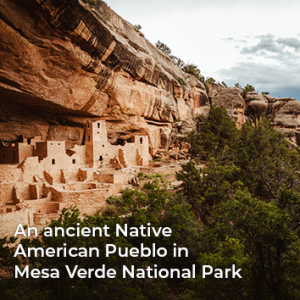
Indigenous tourism is never just one thing. There are 574 federally recognised Native American tribes in the U.S and each has its own story to tell whether it is of past hunting skills or beautiful beadwork; traditional drumming or wood carvings. Spiritual stories are inspired by landscapes as disparate as the humid swamps of Florida and the snow-capped Rocky Mountains and offer insights into how the earliest inhabitants of these harsh lands survived, bringing new meaning to every stunning view.
In Europe, the only indigenous people maintaining their distinct culture are the Sámi primarily in Finland, Norway and Sweden. Best known for their reindeer herding, colourful outfits and winter survival skills, the Sámi population is strong and their language and culture is preserved through an autonomous Sámi parliament. They offer many activities showcasing their traditional lifestyle skills, art and folklore, but are also strongly represented in modern Scandinavian culture too in rap music, architecture, film making and cutting edge design.
As indigenous people are often closely connected with the lands they inhabit, interactions while touring can often be easily achieved simply by choosing a relevant itinerary. Look, for example, for trekking tours in Thailand, Vietnam and neighbouring countries that visit and support the remote indigenous hilltribes of this region.
If you’re passing through a region home to indigenous people, make the effort to stop. Along the Amazon River, for instance, indigenous locals make their money from fishing, trading flowers, fruit, vegetables and handicrafts which you can buy directly from them.
In Africa, many safari camps and animal adventures support indigenous communities. It is sometimes shocking to compare the lush luxury of lodges and indulgent bush camps with the basic infrastructure of local villages, but some game reserves provide employment, support collaborative conservation and environmental awareness among the locals, and offer communities incentives to protect the biodiversity. Look beyond the glamorous Out of Africa brochure shots and ask if some of this wealth goes back to the locals.
Namibia has led the way with the creation of conservancies but community-based natural resource management policies are now rolling out across Zimbabwe, Zambia, Mozambique and South Africa. In Kenya indigenous people were once evicted from vast areas of national park to protect animals but now traditional lifestyles are encouraged to thrive alongside lands leased back from traditional owners to safari operators.
There is no better way to get to heart of local indigenous communities than by understanding their eating habits and culinary tours or cooking classes can make a great meal into a sociable, insightful local interaction.
If you want to head off the beaten track, indigenous interaction in remote regions can be a specialist activity needing permits, interpretation and introductions. But whether it is a trip to the tribal lands of Papua New Guinea or the indigenous mountain tribes of the South American Andes, look for those that offer real benefits to the local communities.
Key to positive, ethical indigenous experiences is to ensure your visit is hosted by that community and is not a one-way activity. Ask questions, share your own stories – interact and understand the culture and the lifestyle, rather than standing behind a camera. Show respect and genuine friendship for the community and it will be a learning and supportive experience – not just a voyeuristic one – making memories stronger than any photo
This is a feature from Issue 4 of Charitable Traveller. Click to read more from this issue.



Fundraising Futures Community Interest Company, Contingent Works, Broadway Buildings,
Elmfield Road, Bromley, Kent,
BR1 1LW. England
Putting our profit to work supporting the work of charitable causes











For the latest travel advice, including security, local laws and passports, visit the Foreign & Commonwealth Office website.
© 2024 All rights reserved
Made with 
| Cookie | Duration | Description |
|---|---|---|
| AWSELB | session | Associated with Amazon Web Services and created by Elastic Load Balancing, AWSELB cookie is used to manage sticky sessions across production servers. |
| cookielawinfo-checkbox-advertisement | 1 year | Set by the GDPR Cookie Consent plugin, this cookie is used to record the user consent for the cookies in the "Advertisement" category . |
| cookielawinfo-checkbox-analytics | 11 months | This cookie is set by GDPR Cookie Consent plugin. The cookie is used to store the user consent for the cookies in the category "Analytics". |
| cookielawinfo-checkbox-functional | 11 months | The cookie is set by GDPR cookie consent to record the user consent for the cookies in the category "Functional". |
| cookielawinfo-checkbox-necessary | 11 months | This cookie is set by GDPR Cookie Consent plugin. The cookies is used to store the user consent for the cookies in the category "Necessary". |
| cookielawinfo-checkbox-others | 11 months | This cookie is set by GDPR Cookie Consent plugin. The cookie is used to store the user consent for the cookies in the category "Other. |
| cookielawinfo-checkbox-performance | 11 months | This cookie is set by GDPR Cookie Consent plugin. The cookie is used to store the user consent for the cookies in the category "Performance". |
| elementor | never | This cookie is used by the website's WordPress theme. It allows the website owner to implement or change the website's content in real-time. |
| JSESSIONID | session | Used by sites written in JSP. General purpose platform session cookies that are used to maintain users' state across page requests. |
| viewed_cookie_policy | 11 months | The cookie is set by the GDPR Cookie Consent plugin and is used to store whether or not user has consented to the use of cookies. It does not store any personal data. |
| Cookie | Duration | Description |
|---|---|---|
| __lc_cid | 2 years | This is an essential cookie for the website live chat box to function properly. |
| __lc_cst | 2 years | This cookie is used for the website live chat box to function properly. |
| __oauth_redirect_detector | past | This cookie is used to recognize the visitors using live chat at different times inorder to optimize the chat-box functionality. |
| aka_debug | session | Vimeo sets this cookie which is essential for the website to play video functionality. |
| player | 1 year | Vimeo uses this cookie to save the user's preferences when playing embedded videos from Vimeo. |
| Cookie | Duration | Description |
|---|---|---|
| AWSELBCORS | 6 minutes | This cookie is used by Elastic Load Balancing from Amazon Web Services to effectively balance load on the servers. |
| Cookie | Duration | Description |
|---|---|---|
| _ga | 2 years | The _ga cookie, installed by Google Analytics, calculates visitor, session and campaign data and also keeps track of site usage for the site's analytics report. The cookie stores information anonymously and assigns a randomly generated number to recognize unique visitors. |
| _gat_gtag_UA_164521185_1 | 1 minute | This cookie is set by Google and is used to distinguish users. |
| _gid | 1 day | Installed by Google Analytics, _gid cookie stores information on how visitors use a website, while also creating an analytics report of the website's performance. Some of the data that are collected include the number of visitors, their source, and the pages they visit anonymously. |
| _hjAbsoluteSessionInProgress | 30 minutes | No description available. |
| _hjFirstSeen | 30 minutes | This is set by Hotjar to identify a new user’s first session. It stores a true/false value, indicating whether this was the first time Hotjar saw this user. It is used by Recording filters to identify new user sessions. |
| _hjid | 1 year | This is a Hotjar cookie that is set when the customer first lands on a page using the Hotjar script. |
| _hjIncludedInPageviewSample | 2 minutes | No description available. |
| CONSENT | 16 years 3 months 16 days 17 hours 23 minutes | These cookies are set via embedded youtube-videos. They register anonymous statistical data on for example how many times the video is displayed and what settings are used for playback.No sensitive data is collected unless you log in to your google account, in that case your choices are linked with your account, for example if you click “like” on a video. |
| iutk | 5 months 27 days | This cookie is used by Issuu analytic system. The cookies is used to gather information regarding visitor activity on Issuu products. |
| vuid | 2 years | Vimeo installs this cookie to collect tracking information by setting a unique ID to embed videos to the website. |
| Cookie | Duration | Description |
|---|---|---|
| IDE | 1 year 24 days | Google DoubleClick IDE cookies are used to store information about how the user uses the website to present them with relevant ads and according to the user profile. |
| mc | 1 year 1 month | Quantserve sets the mc cookie to anonymously track user behaviour on the website. |
| NID | 6 months | NID cookie, set by Google, is used for advertising purposes; to limit the number of times the user sees an ad, to mute unwanted ads, and to measure the effectiveness of ads. |
| test_cookie | 15 minutes | The test_cookie is set by doubleclick.net and is used to determine if the user's browser supports cookies. |
| VISITOR_INFO1_LIVE | 5 months 27 days | A cookie set by YouTube to measure bandwidth that determines whether the user gets the new or old player interface. |
| YSC | session | YSC cookie is set by Youtube and is used to track the views of embedded videos on Youtube pages. |